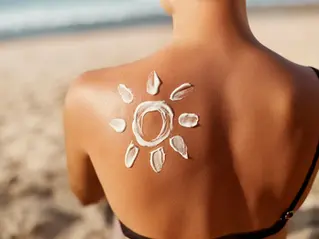The Beauty Shift: How Menopause Transforms Your Hair, Skin, and Nails (and What You Can Do About it)
- Love To Feel Editorial Team
- Jun 30
- 3 min read
Updated: Jul 9
A Natural Transition
Menopause isn't just a hormonal milestone, it’s a full-body evolution. As oestrogen takes a bow and hormonal rhythms change, many women find their hair, skin, and nails telling a different story.
Dry skin that once glowed, nails that suddenly split, and hair that thins in all the wrong places, it’s real, and it’s frustrating. But it’s also manageable. The key? Understanding what’s happening under the surface.
Effects of Menopause on Hair
One of the first things many women notice during menopause is hair thinning, especially around the crown and temples. Why?
The reason: lower oestrogen and progesterone. These hormones help hair grow and stay on your head longer. As they drop, hair can shift into a shorter growth cycle, leading to thinning or shedding.
The kicker: rising androgen levels. Androgens (yes, we all have them) can shrink hair follicles, especially in women genetically predisposed to female pattern hair loss.
What helps:
Switching to sulfate-free, volumising shampoos
Considering topical minoxidil (after a chat with your GP)
Supplements with biotin or iron (if you’re deficient)
Micro-needling or PRP treatments for those interested in clinical options
Additional Reading: Menopause and Mental Health
Menopause and Skin
Oestrogen isn’t just a hormone, it’s your skin’s best friend. It helps retain moisture, stimulates collagen production, and keeps skin plump and elastic. So when it drops?
Collagen loss spikes, by about 30% in the first five years post-menopause.
Dryness sets in as the skin produces less sebum.
Elasticity wanes, and fine lines get bolder.
What helps:
Moisturise like you mean it, look for ceramides, hyaluronic acid, and squalane
Retinoids (prescription or over-the-counter) to boost collagen
Omega-3 supplements and a diet rich in healthy fats
SPF daily, even on cloudy days, especially as skin gets more sensitive
How Menopause Affects Nails
Menopause doesn’t spare your nails. Weak, brittle, and slow-growing nails are common complaints, and often get less attention than they deserve.
Why?
Reduced keratin production (keratin is the protein your nails are made of)
Poor circulation or nutrient absorption, especially if digestion changes
Frequent hand washing or exposure to water, which strips natural oils from already dry nail beds
What helps:
Cuticle oils and barrier creams after washing hands
Biotin, zinc, and iron (after testing for deficiencies)
Avoiding acetone-based nail polish removers
Regular filing (not cutting) to prevent splitting
Inside-Out Care: It’s Not Just Topical
Here’s the thing: topical products help, but the real transformation comes from the inside. Hydration, stress management, and nutrition are the foundation.
Hydrate: aim for at least 1.5–2 litres of water daily
Eat for your skin: think omega-rich fish, nuts, leafy greens, and berries
Sleep: your cells do their best repair work while you’re asleep
Manage stress: cortisol wreaks havoc on your skin and hair; even 10 minutes of deep breathing helps
Hormone Replacement Therapy (HRT): A Deeper Layer
While not for everyone, HRT can dramatically reduce some of the beauty-related symptoms of menopause by stabilising hormone levels. Some women report stronger nails, smoother skin, and thicker hair within months.
But it’s not a beauty tool, it’s a medical decision. Talk with your GP about your symptoms and weigh the risks and benefits.
Read More: Your First GP Appointment About Menopause
Grace, Not Perfection
Menopause doesn’t have to be a slow fade into invisibility. It’s an invitation to tune into your body’s new language, and respond with grace, humour, and maybe a few new products on your shelf.










Commenti